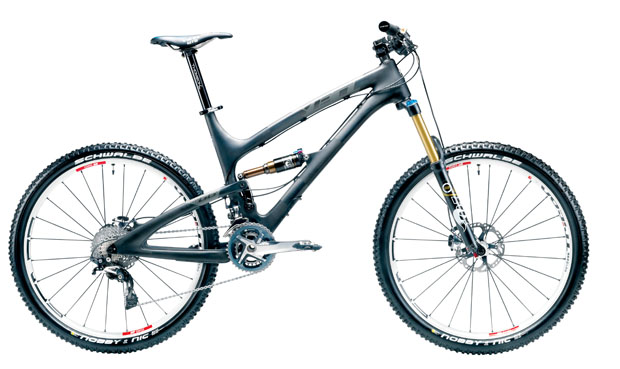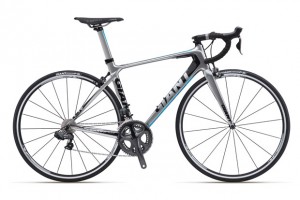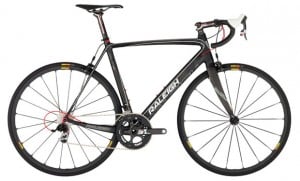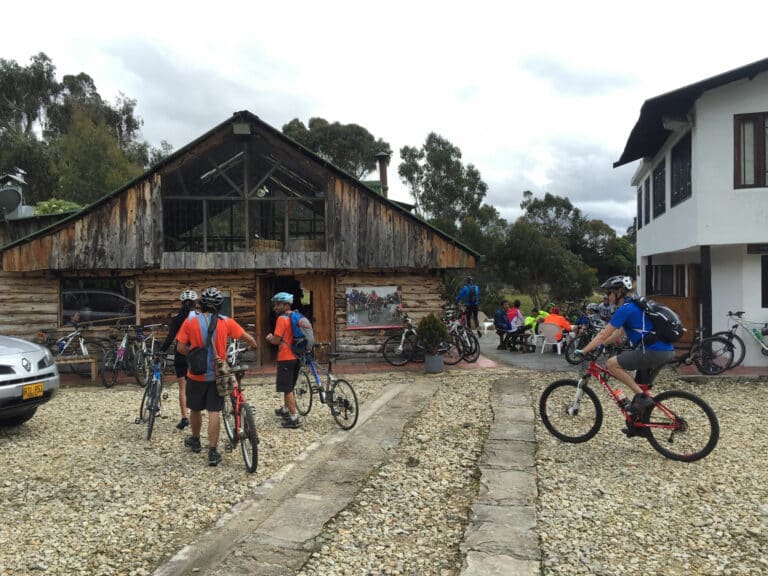The Best in Bikes for 2012
king of the mountain, Yeti SB-66 Carbon
Why It Won: This bike is buttah. Quite simply, it’s a six-inch travel trail bike that can climb with the guts of a cross country ride, making it ideal for much of the Southern Appalachians. That climbing superpower comes thanks to the stiff, six-pound carbon frame and Yeti’s switch rear suspension—a dual link design with a low pivot point. Will you hammer your race-crazy buddies on cross-country bikes? No, but you will climb better than any of your trail bike bros, and when it comes to the downhill, that six inches of rear travel sucks up the gnarliest of terrain for one big, plush ride.
Where to Ride It: This bike was made for challenging singletrack with big, nasty terrain. But we liked it so much because it performed everywhere we took it—from rocky mountain summits to wet, boggy river bottoms.
$3,000 (frame), $4,500 (build with SRAM and Fox 32 F150 RLC front fork) ; yeticycles.com
road rager, Giant TCR 0
Why It Won: Giant is a big bike manufacturer (one of the biggest companies in Taiwan, actually), but that massive reach has enabled it to offer a sweet composite ride like this at an economic-downturn-friendly price. Giant’s size also means the brand was able to fully integrate everything on this bike—frame, bottom bracket, and wheels were designed to work as a unit here instead of being pieced together from various manufacturers. It climbs with authority and bombs with confidence. Plus, it’s outfitted with Shimano Ultegra Di2 electronic shifting, which allows for precise gear changes on the fly—just the type of no-fuss performance you want in a race.
Where to Ride: Sure, this is your race-day bike, but it’s also ideal for training with your hard-charging posse. $4,550; giant-bicycles.com
race ready 26, Cannondale Scalpel 2
Ups: Meet your race machine. It’s all about ounces when you are looking for a competitor, and the carbon frame on the Scalpel weighs in at a ridonkulous 3.47 pounds (and don’t forget Cannondale’s odd “lefty” fork design which is only half a fork arm, cutting out more weight). But it’s not twitchy on the trail—that carbon is quite stiff and the brand’s Zero Pivot stay system, which cuts out bearings and bushings to cut down on weight even more, offers 80 mm of rear travel. It’s not the ride for Moab, but enough to keep you comfortably on track in a race (or hammering your so-called friends). And that weird fork? It takes some getting used to aesthetically, but you soon forget about it in the heat of battle.
Downs: While it’s a great race or pain-fest bike, it’s not the tool for big, technical rides. $5,000; cannondale.com
pounding the pavement, Raleigh Melitis 3
Ups: This stallion may be the only bike you need. Stiff, light high-modulus carbon pairs up with a frame design and geometry that we found just as comfortable in competition as it was slogging up Mount Evans. And as Travolta would say, the real difference, though, is in the little details—internal cable routing and full SRAM red componentry. That incredible build shone through on the pavement, where this bike impressed our group-ride geeks. If the price tag scares you off, the equally impressive Militis 2, which also features SRAM Red, is half the price at $3,300 (and the Militis 1 is just $2,500 for a carbon bike).
Downs: The geometry may be a bit too aggressive for day-to-day riding for some of the low-back-challenged among us. $6,500; raleighusa.com










